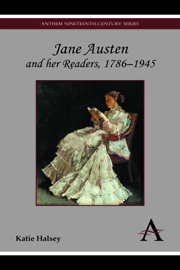Book contents
Summary
Many of the interactions with Jane Austen described in these final chapters do not appear, at first glance, to take up the challenging invitations of her style. Readers who find in Austen ‘morality’, ‘health’ and ‘consolation’ are, it could be argued, resisting her challenges to ideology and ignoring the disruptive energies of her novels. Or it could be argued that these readers are in fact interpreting Austen more accurately, that whatever the energies of the prose style, the eventual result of the novels is a confirmation or affirmation of domestic sociability, peaceful country life and happy marriages. Readers who value and trust in Austen's happy endings are, of course, many. Winston Churchill was not the only person to find Austen's novels to be consolatory in war time – an anonymous Mass Observation respondent similarly ‘could read nothing but Jane Austen's Emma when war broke out’, and Anna Neagle, who starred in a war-time stage production of Emma, called it ‘perfect escapist entertainment’. A whole novel, Karen Joy Fowler's The Jane Austen Book Club (2004), takes as its premise the idea that regularly reading Jane Austen is the way to find a happy marriage, ending with the words:
We'd let Austen into our lives, and now we were all either married or dating. Could O'Brian have done this? How? When we needed to cook aboard ship, play a musical instrument, travel to Spain dressed like a bear, Patrick O'Brian would be our man. Till then, we'd just wait. In three or four years it would be time to read Austen again.
- Type
- Chapter
- Information
- Jane Austen and her Readers, 1786–1945 , pp. 209 - 214Publisher: Anthem PressPrint publication year: 2012



